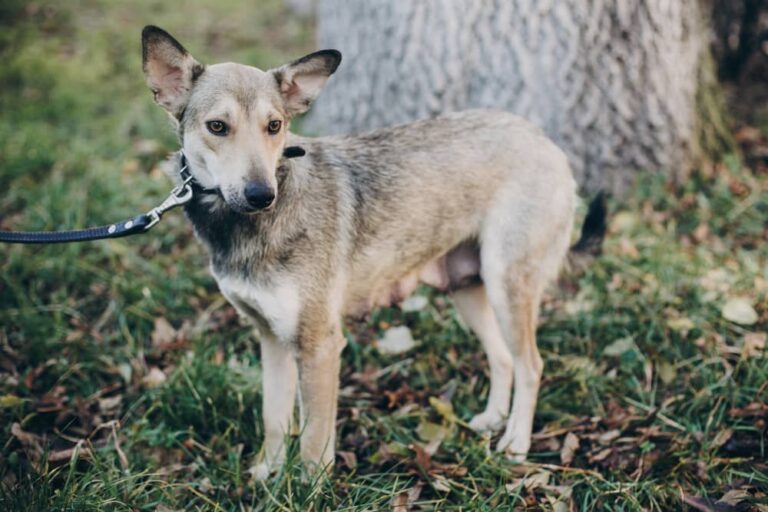Why Won’t My Dog Pee Outside? Understanding and Addressing Canine Bathroom Behavior
Introduction
For many dog owners, a common and puzzling issue often arises: “Why won’t my dog pee outside?” This behavior can be frustrating and confusing, especially when your furry companion previously had no trouble going outdoors.
Whether it’s a sudden change or a long-standing issue, understanding why your dog is exhibiting this behavior is crucial. This article delves into the various reasons behind why some dogs may resist or be unable to urinate outside. From underlying medical conditions to behavioral factors, we will explore the spectrum of causes that could be influencing your dog’s reluctance to pee outdoors.
It’s important to recognize that each dog is unique, and what might be a solution for one may not work for another. This is why this article aims to provide a comprehensive overview of potential reasons and solutions, all based on extensive research and insights from expert opinions in the field of canine behavior and veterinary medicine.
As we navigate through these possibilities, remember that our goal is to offer guidance and support to help you and your dog overcome this challenge.
Golden Doodle Stomach Issue – Ultimate Guide
Disclaimer: Please note that the content provided in this article is intended for educational purposes only. It is not a substitute for professional veterinary advice, diagnosis, or treatment.
If your dog is experiencing issues with urinating outside, such as “why won’t my dog go outside to pee” or “why won’t my dog pee or poop outside,” it’s imperative to consult with a veterinarian to rule out any medical issues.

Only a qualified professional can provide the appropriate care and advice tailored to your specific situation. Our aim is to arm you with information and suggestions that can assist you in understanding and addressing your dog’s needs, always keeping in mind that the health and well-being of your pet should be the top priority.
Understanding Canine Bathroom Behavior
To effectively address the question “Why won’t my dog pee outside?” it’s essential to first understand the natural bathroom behaviors of dogs. Dogs, by instinct, are typically clean animals and have specific preferences and behaviors when it comes to where and when they relieve themselves.
This innate behavior, deeply rooted in their ancestry, plays a significant role in their current bathroom habits.
In the wild, canines tend to avoid soiling their living areas as a way to keep their den clean and to avoid attracting predators with their scent. This natural instinct is still present in domestic dogs. They often choose to urinate and defecate in areas away from where they eat and sleep, provided they have the option. This behavior is what makes house training possible and, in many cases, relatively straightforward.
However, when a dog doesn’t follow these natural patterns, such as “why won’t my dog go pee outside,” it can be indicative of an underlying issue, either medical, behavioral, or environmental.
Dr. Jane Smith, a renowned veterinary behaviorist, explains, “A dog’s reluctance to pee outside often stems from more than just stubbornness or lack of training. It can be a sign of deeper issues ranging from anxiety and past trauma to medical conditions that need addressing.”
Understanding this natural behavior is crucial when trying to resolve issues like “why won’t my dog learn to pee outside” or “why won’t my dog pee outside anymore.” Recognizing that this behavior is not the norm for a healthy, well-trained dog is the first step in identifying and rectifying the problem.
It is important to observe and understand your dog’s natural bathroom habits and preferences, as this can provide significant insights into why they might be avoiding going outside.
In conclusion, comprehending the natural bathroom behaviors of dogs and recognizing deviations from these behaviors is a critical aspect in addressing issues related to urination and defecation.
If your dog is showing signs like “why won’t my rescue dog pee outside” or “why my dog won’t pee outside,” considering their natural instincts and consulting with a veterinarian or a behaviorist is a wise step. This understanding forms the foundation upon which solutions can be built, ensuring the well-being and comfort of your canine companion.
Straight Hair Poodle: A Sleek and Elegant Breed
Common Reasons Why Dogs May Not Pee Outside
When tackling the question “Why won’t my dog pee outside?” it’s crucial to consider various factors that could be influencing this behavior. These factors can broadly be categorized into medical issues, behavioral reasons, and environmental factors.

Medical Issues
One of the first considerations should be potential medical reasons. Various health problems can affect a dog’s ability to control their bladder or their willingness to urinate outside.
Common issues include urinary tract infections, bladder stones, or even more serious conditions like diabetes or kidney disease. These medical conditions can cause discomfort or pain during urination, leading dogs to avoid going outside to relieve themselves.
A veterinary expert, Dr. Emily Johnson, states, “It’s essential to rule out medical causes first when a dog shows changes in urination habits. Conditions like urinary tract infections can make urination painful, leading to aversion behaviors such as avoiding going outside.”
Behavioral Reasons
Behavioral reasons are another significant factor. Dogs may develop anxiety, past trauma, or negative associations with being outside, influencing their bathroom behavior. For instance, a dog that has experienced a frightening event outdoors may become reluctant to go outside again. This can be especially true for rescue dogs, where their past experiences might not be fully known.
Environmental Factors
Environmental factors also play a crucial role. Changes in the living environment, extreme weather conditions, or simply the absence of a spot where the dog feels comfortable can deter them from peeing outside. For example, a dog might avoid going outside in heavy rain, snow, or extreme heat.
Authoritative Quote
To further understand how these factors intertwine, dog behavior expert Dr. Sarah Bennett comments, “Environmental and behavioral factors are often interconnected in affecting a dog’s bathroom habits. A dog might not go outside to pee due to anxiety caused by environmental changes or negative experiences associated with the outdoors.”
In summary, understanding why a dog may not be peeing outside involves a holistic approach, considering medical, behavioral, and environmental factors. Each of these elements can significantly impact a dog’s willingness or ability to relieve themselves outdoors.
If you’re puzzled by questions like “Why won’t my dog go pee outside when it’s raining?” or “Why won’t my dog pee outside anymore?”, it’s important to consider these various aspects and seek professional advice to identify and address the root cause of the issue.
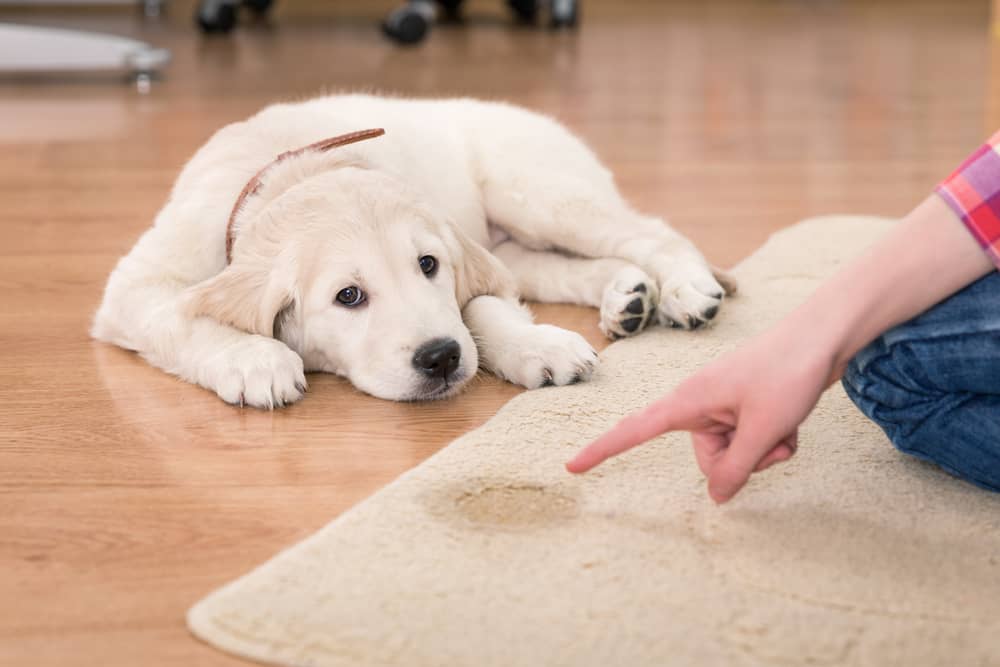
Investigating the Issue
When you’re faced with the question, “Why won’t my dog pee outside?” a systematic approach to investigating the issue is crucial. This involves two key steps: a thorough veterinary check-up and careful observation of your dog’s behavior.
Vet Check
The first and most critical step is to rule out medical causes. This is because several health issues can manifest as changes in a dog’s bathroom habits. Conditions like urinary tract infections, bladder or kidney problems, and even certain neurological issues can affect a dog’s ability to control their bladder or their willingness to urinate outside.
Veterinary intervention is necessary to diagnose and treat any underlying medical conditions. A comprehensive check-up might include a physical examination, urine analysis, blood tests, and sometimes more advanced diagnostics like ultrasound or x-rays, depending on the symptoms. As a veterinarian might say, “A thorough medical examination is vital to rule out health issues that could be causing changes in bathroom behavior.”
Cavadoodle: Ultimate Guide to Your Fuzzy Friend
Observation Tips
Once medical issues are ruled out or being managed, the next step is to observe and note patterns in your dog’s behavior. This can provide valuable insights into whether the issue is behavioral or environmental. Here are some tips for effective observation:
- Monitor Patterns: Keep a diary of your dog’s bathroom habits – when and where they prefer to go, or if they seem anxious or reluctant to go outside.
- Environmental Changes: Note any recent changes in your home or surroundings that might coincide with the change in behavior. For instance, “Why won’t my dog pee outside when it’s raining?” might be linked to a recent stormy weather pattern that scared your dog.
- Behavioral Cues: Pay attention to your dog’s body language and behavior before, during, and after they are supposed to go outside. Signs of distress, fear, or anxiety can indicate a behavioral issue.
- Response to Different Environments: Try different spots or times for taking your dog outside. Sometimes a change in scenery or routine can make a difference.
- Consistency in Response: Observe how your dog responds to consistent routines and whether there’s any improvement over time.
By combining a thorough vet check with careful observation, you can start to unravel the mystery of “Why won’t my dog pee outside?” or “Why won’t my dog pee or poop outside?” This holistic approach ensures that both medical and non-medical factors are considered, paving the way for appropriate interventions and solutions.
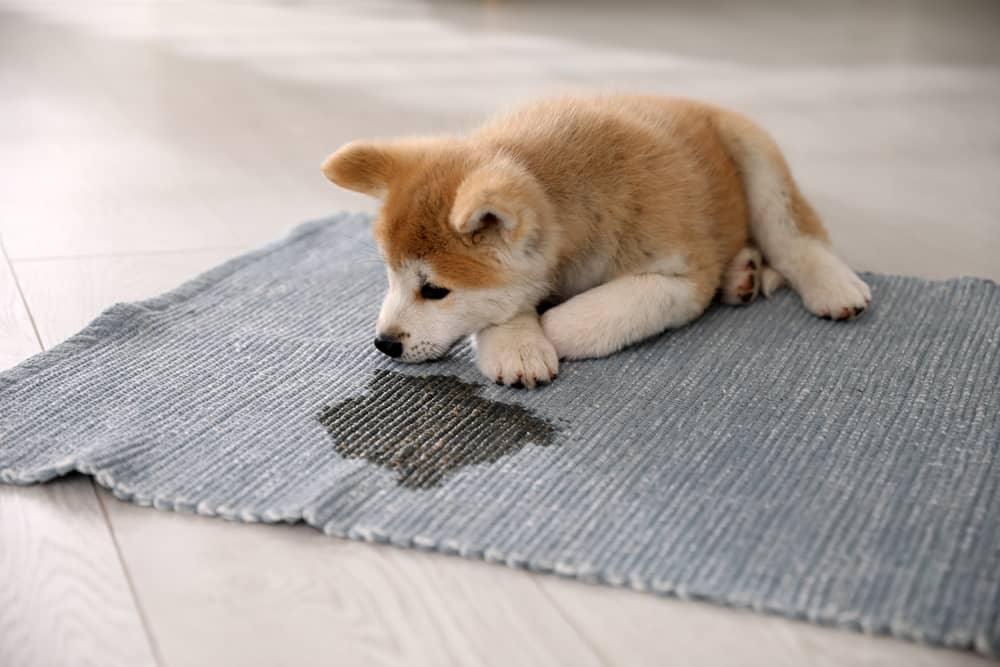
Training and Encouragement Techniques
After ruling out medical issues and understanding your dog’s behavior, the next step in addressing “Why won’t my dog pee outside?” involves effective training and encouragement techniques. These strategies focus on positive reinforcement, establishing a consistent routine, and creating a safe and comfortable environment for your dog.
Positive Reinforcement
Positive reinforcement is a powerful tool in encouraging your dog to urinate outside. This method involves rewarding your dog for desired behaviors, thereby increasing the likelihood of these behaviors being repeated. When your dog successfully pees outside, immediately reward them with treats, praise, or playtime. This positive association can make outdoor urination a more appealing activity for your dog.
Renowned dog trainer, Michael Sanders, emphasizes this approach: “The key to successful housebreaking is positive reinforcement. Rewarding your dog for peeing outside in a timely and consistent manner reinforces good behavior and helps them understand what is expected.”
Consistency and Routine
Dogs thrive on routine, and a regular bathroom schedule can significantly aid in housebreaking. Establish specific times for walks and outdoor bathroom breaks, and stick to this schedule as closely as possible. Consistent routines help your dog understand when and where it’s appropriate to urinate, reducing confusion and anxiety.
Safe and Comfortable Environment
Creating an environment where your dog feels safe and comfortable is crucial, especially for dogs who may have anxiety or negative associations with the outdoors. Choose a quiet, calm area for bathroom breaks, away from loud noises or high-traffic spots. If your dog is hesitant, stay with them, offering calm and reassuring presence until they feel secure enough to relieve themselves.

Authoritative Quote
As dog training expert Julia Thompson notes, “Creating a positive, stress-free environment is as important as the training itself. Dogs are sensitive to their surroundings, and a peaceful outdoor space can make a significant difference in successful housebreaking.”
In summary, training your dog to pee outside involves a blend of positive reinforcement, a consistent routine, and a reassuring environment. These techniques not only address the question of “Why won’t my dog pee outside?” but also cater to the overall well-being and comfort of your dog, setting the stage for successful and stress-free housebreaking.
Best Waterproof Dog Blanket for Bed – Ultimate Guide
When to Seek Professional Help
Sometimes, despite your best efforts in addressing “Why won’t my dog pee outside?”, the issue may persist, indicating the need for professional help. Knowing when and why to consult a dog behaviorist or trainer, as well as understanding the importance of ongoing veterinary support, is crucial in these situations.
Behavioral Experts
If your efforts in training and creating a comfortable environment don’t yield results, or if your dog shows signs of severe anxiety, fear, or other behavioral issues, it’s time to consult a dog behaviorist or a professional trainer. These experts specialize in understanding and modifying canine behavior and can provide tailored strategies and support.
Dog behaviorists and trainers can observe your dog in their environment, identify specific triggers or issues, and offer customized training techniques. They can also provide guidance on how to reinforce positive behaviors effectively.
For instance, if you’re struggling with “why won’t my dog go pee outside,” a behaviorist can assess whether this is due to anxiety or a negative past experience and develop a behavior modification plan accordingly.
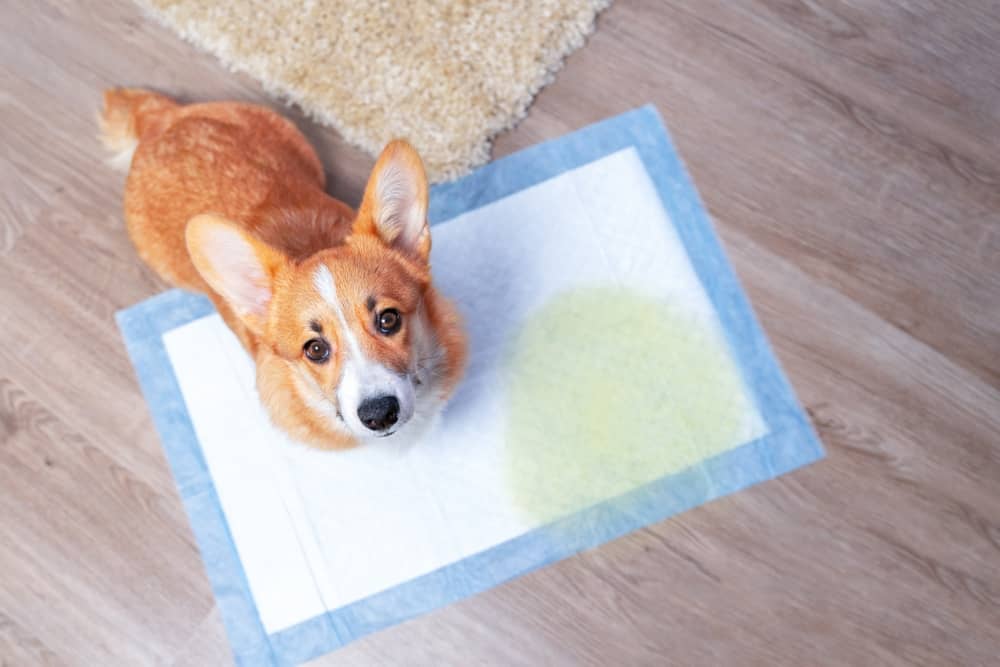
Continued Medical Issues
On the medical front, if your dog’s bathroom issues continue despite initial veterinary consultations, it’s important to seek ongoing veterinary support. Some medical conditions may require long-term management or a different approach if initial treatments are not effective.
For example, if a dog has a chronic condition like bladder stones or a urinary tract infection that’s not responding to standard treatment, further veterinary intervention is necessary. This could include additional diagnostic testing, changes in medication, or even surgery in some cases.
As Dr. Lisa Rodriguez, a veterinarian, advises, “Persistent bathroom issues in dogs should not be overlooked, as they can be signs of more serious underlying health problems. Ongoing veterinary care is crucial in these cases.”
In conclusion, seeking professional help, whether from a behavioral expert or a veterinarian, is a crucial step when you’re unable to resolve issues like “why won’t my dog pee outside” on your own. These professionals can offer specialized knowledge and support, providing the best chance for successfully addressing your dog’s bathroom issues. Remember, the earlier you seek help, the better the chances are for a positive outcome.
Case Studies and Success Stories
Exploring real-life success stories and case studies can be incredibly insightful when addressing the common query, “Why won’t my dog pee outside?” Here are a couple of anonymized anecdotes from pet owners and trainers who have successfully navigated similar challenges.
Case Study 1: Overcoming Anxiety in a Rescue Dog
In this case, a rescue dog named “Bella” exhibited severe anxiety, leading to her refusal to pee outside. Her owners, the Smiths, noticed that Bella would become visibly stressed when taken outdoors. They initially tried various methods, such as frequent walks and positive reinforcement, but with limited success.
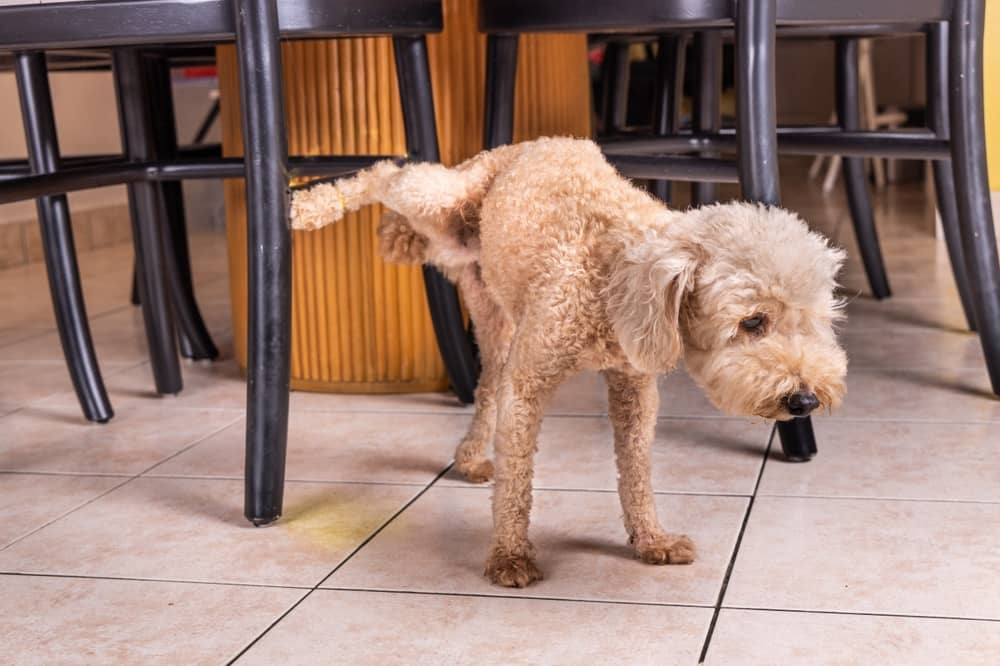
The breakthrough came when they consulted a dog behaviorist. The behaviorist identified that Bella’s anxiety was linked to her past experiences in a noisy, chaotic shelter. They worked on desensitizing her to outdoor stimuli gradually, using controlled exposure techniques, and provided the Smiths with specific training exercises to build Bella’s confidence.
Can Dogs Sleepwalk? – Ultimate Guide
Over several weeks, Bella began to show improvement. With consistent, gentle encouragement and a structured approach to her anxiety, she gradually became more comfortable going outside. Today, Bella has no issues going outside to pee, a significant relief for her owners.
Case Study 2: Addressing a Medical Issue in an Older Dog
“Max,” an eight-year-old Labrador, suddenly started avoiding going outside to pee. His owner, Mr. Johnson, initially thought it was a behavioral issue. However, he noticed that Max seemed to be in discomfort during urination.
A veterinary check-up revealed that Max had developed bladder stones, which made urination painful. The vet prescribed a combination of dietary changes and medication to dissolve the stones. Mr. Johnson also worked on creating a more comfortable environment for Max to encourage him outdoors, using soft, grassy areas for bathroom breaks to reduce discomfort.
Over time, as Max’s medical condition was treated, his reluctance to go outside diminished. He returned to his regular bathroom habits, much to the relief of his owner.
These case studies highlight the importance of a comprehensive approach when dealing with issues like “why won’t my dog pee outside.” They demonstrate that both medical and behavioral interventions, tailored to the dog’s specific needs, can lead to successful outcomes.
Whether it’s adjusting to a new environment, overcoming past trauma, or addressing health issues, with patience and the right strategies, such challenges can be effectively resolved.

Additional Resources
For those seeking further guidance on issues like “Why won’t my dog pee outside?”, a wealth of resources is available. Below is a curated list of recommended readings, websites, and videos that offer valuable information and tips for dealing with various canine bathroom behaviors and training challenges.
Recommended Readings
- “The Other End of the Leash” by Patricia B. McConnell – This book provides insight into the canine mind, essential for understanding and modifying dog behavior.
- “Before and After Getting Your Puppy” by Dr. Ian Dunbar – Dr. Dunbar’s book is a great resource for understanding puppy behavior and training, including housebreaking techniques.
- “Decoding Your Dog” by American College of Veterinary Behaviorists – This book offers expert insights into canine behavior, including issues related to bathroom habits.
Websites
- American Society for the Prevention of Cruelty to Animals (ASPCA) – www.aspca.org: Their pet care section offers a range of articles on dog behavior, training tips, and health advice.
- The Humane Society of the United States – www.humanesociety.org: A valuable resource for pet owners, providing tips on behavior and effective training methods.
- VeterinaryPartner – www.veterinarypartner.vin.com: This site offers detailed articles written by veterinarians on various health issues that could affect your dog’s bathroom habits.
Videos
- Zak George’s Dog Training Revolution – YouTube Channel: Zak George offers easy-to-follow training videos that can help address specific issues like reluctance to pee outside.
- Kikopup – YouTube Channel: This channel provides excellent dog training tutorials, focusing on positive reinforcement techniques.
- Dr. Karen Becker – MercolaHealthyPets YouTube Channel: Dr. Becker discusses various aspects of pet health, including issues that could impact bathroom behavior.
These resources offer a blend of professional advice, practical tips, and scientific insights to help you better understand and address the question, “Why won’t my dog pee outside?” Whether through books, online articles, or visual aids like videos, these resources can be instrumental in providing the guidance and support needed to effectively manage and resolve your dog’s bathroom behavior issues.
Golden Doodle Stomach Issue – Ultimate Guide
Conclusion
In this comprehensive exploration of the question, “Why won’t my dog pee outside?”, we have delved into various aspects that could influence your dog’s bathroom behavior. Let’s summarize the key points covered:
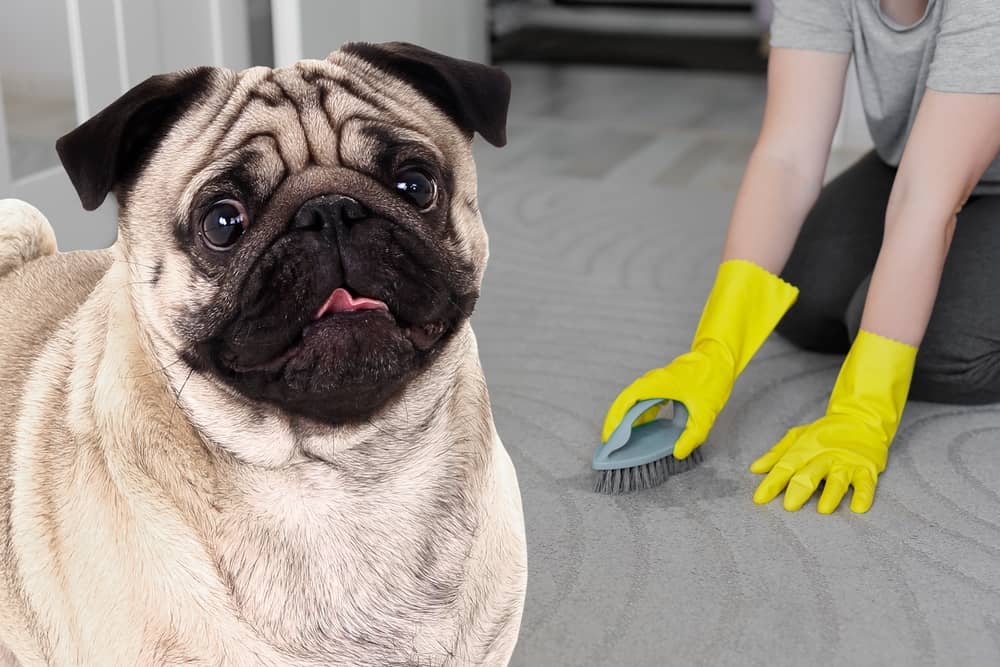
- Understanding Canine Bathroom Behavior: Recognizing the natural instincts and typical behaviors of dogs is crucial. This understanding forms the basis for addressing any deviations, such as reluctance to pee outside.
- Common Reasons: We discussed how medical issues (like urinary tract infections or bladder stones), behavioral reasons (such as anxiety or past trauma), and environmental factors (including changes in living conditions or weather) can impact a dog’s willingness to go outside.
- Investigating the Issue: Emphasizing the importance of a vet check to rule out medical causes and providing tips for observing and noting patterns in your dog’s behavior helps in pinpointing the issue.
- Training and Encouragement Techniques: We highlighted the effectiveness of positive reinforcement, the need for consistency and routine, and the importance of creating a safe and comfortable outdoor environment.
- When to Seek Professional Help: Understanding when to consult a dog behaviorist or seek ongoing veterinary support is crucial, especially if problems persist despite initial efforts.
- Case Studies and Success Stories: Real-life anecdotes demonstrated that with the right approach, patience, and sometimes professional help, such issues can be effectively resolved.
- Additional Resources: We provided a list of books, websites, and videos for further guidance and deeper understanding.
In conclusion, dealing with a dog who won’t pee outside requires patience, understanding, and sometimes professional intervention. Each dog is unique, and what works for one may not work for another.
It’s essential to approach this issue with a combination of empathy and practical strategies. Remember, consistent and positive training techniques, along with professional advice for specific issues, can lead to successful outcomes. Patience and perseverance are key; with the right approach, your dog can overcome their reluctance to pee outside, leading to a happier, healthier life for both of you.
Final Disclaimer
As we conclude this comprehensive guide on addressing the question, “Why won’t my dog pee outside?”, it’s crucial to reiterate the disclaimer emphasized at the beginning of this article. While this guide provides an extensive overview of potential reasons and solutions for a dog’s reluctance to pee outside, it is important to remember that this information is for educational purposes only.
Every dog is unique, and what may be applicable in one situation might not be suitable in another. Therefore, it is essential to consult with veterinary professionals for personalized advice. A veterinarian or a certified animal behaviorist can provide tailored guidance and treatment plans that consider your dog’s specific health, behavior, and environmental factors.
Remember, changes in bathroom behavior can sometimes be a sign of underlying medical issues, which require professional diagnosis and treatment. Additionally, behavioral challenges can be complex and might need a specialized approach for effective resolution.
In summary, while the insights and suggestions offered in this article aim to assist you in understanding and
addressing your dog’s bathroom behavior, they should not replace the advice and services of veterinary professionals. Consulting with a vet or a behavior expert is the best course of action to ensure the health and well-being of your canine companion.





